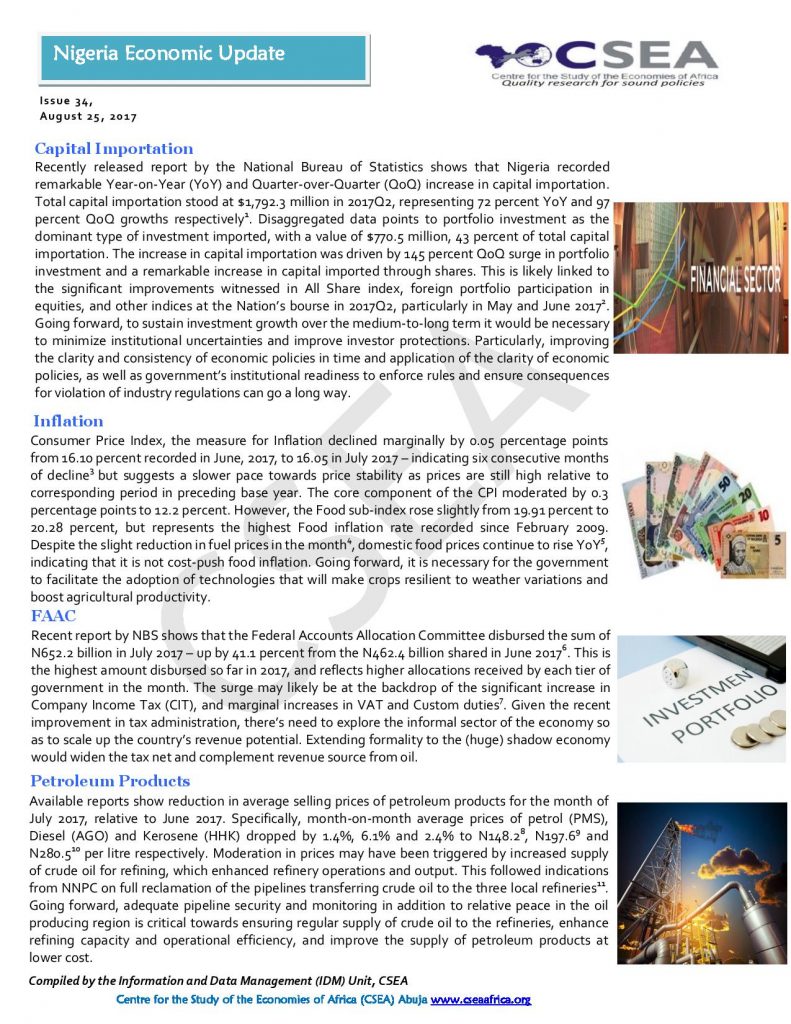Macroeconomic Report & Economic Updates

September 12, 2017
Nigeria Economic Update (Issue 34)
Recently released report by the National Bureau of Statistics shows that Nigeria recorded remarkable Year-on-Year (YoY) and Quarter-over-Quarter (QoQ) increase in capital importation. Total capital importation stood at $1,792.3 million in 2017Q2, representing 72 percent YoY and 97 percent QoQ growths respectively. Disaggregated data points to portfolio investment as the dominant type of investment imported, with a value of $770.5 million, 43 percent of total capital importation. The increase in capital importation was driven by 145 percent QoQ surge in portfolio investment and a remarkable increase in capital imported through shares.
Related
Nigeria Economic Update (Issue 2)
Inflation rate rose slightly to 9.4 percent in
November 2015 from 9.3 percent in the previous month. This rise is attributed
to price increase in Food and Non-Alcoholic Beverages, and Transportation costs
which extends from shortages of petrol across the country. The food
sub-index grew by 0.2 percentage points to 10. 1 percent while, the Core sub-index
declined by 0.2 percentage points to 8.7 percent within the period. The
inflationary up-tick points to the need to curtail the rising food prices by
increasing the supply of petrol in the country.
The Chinese Model Of Infrastructure Development In Africa
Infrastructural
development is a key step in providing a competitive business environment for
African economies. It provides the backbone for poverty reduction strategies
and programmes designed to improve the livelihood of the poor. Africa is in
dire need of infrastructural development. The absence of quality infrastructure
in the continent holds back per capita economic growth by 2 percentage points
each year and depresses firm productivity by as much as 40 percent (Escribano
et al., 2008 and Kelly, 2012). Estimates suggest that around USD 90 billion is
required to close Africas infrastructure gap annually until 2020 (AICD, 2010).
